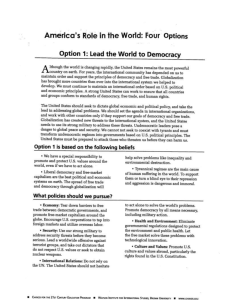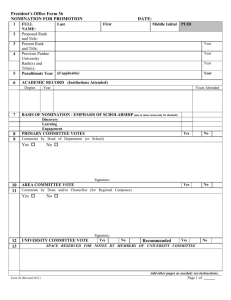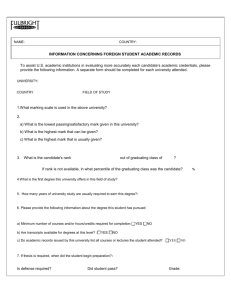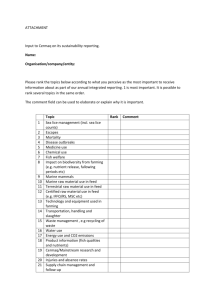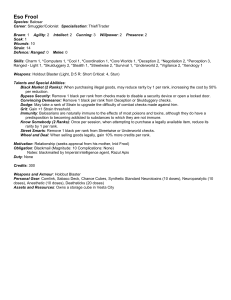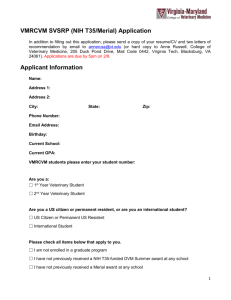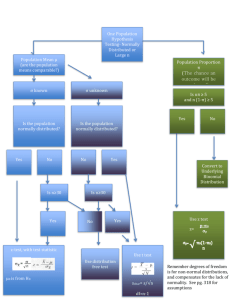0711
advertisement
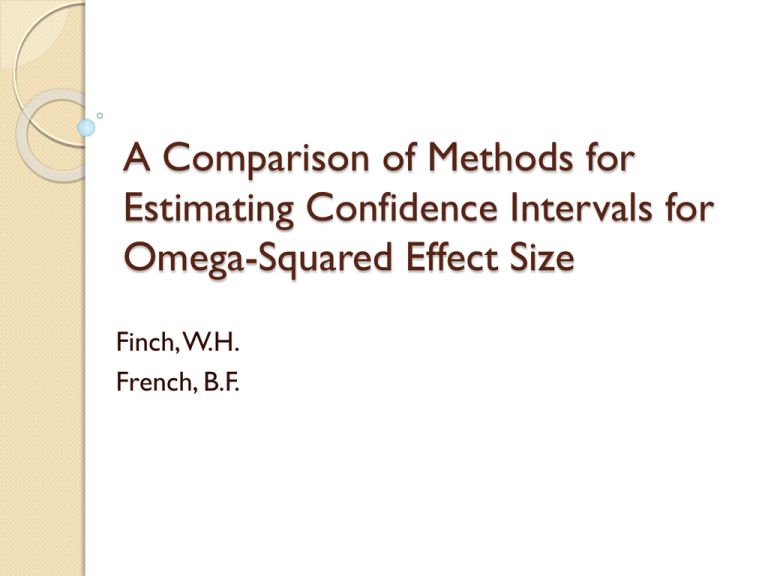
A Comparison of Methods for Estimating Confidence Intervals for Omega-Squared Effect Size Finch, W.H. French, B.F. Omega-squared ( ): a method of assessing the magnitude of experimental effect in ANOVA. k is the number of treatments Three methods for CI 1. parametric, non-central-t (NCT) based CI Assumptions: a) data are randomly sampled from normal distribution; b) homogeneity of variance; c) independent of observations. When H0 is false, the difference between means divided by SE follow a noncentral-t distribution Df = n1 + n2 -2 Noncentrality parameter λ Lower limit for λ is obtained by finding the noncentral parameter whose 1- α/2 quantile is observed t value. Upper limit for λ is the noncentral parameter whose α/2 quantile is observed t value. Once CI for λ is constructed, CI for δ can be found by simple transformation. PERC Bootstrap Complete the following steps for B times: 1. A sample of size n1 is randomly selected with replacement from the scores for participants in the first level of the factor, compute the mean and variance. 2. Complete the first step for participants in the second level of the factor. 3. ES is calculated from the results in S1 and S2. Denote the estimate by d*. 4. Rank the B values of d* from low to high. 5. Lower limit for CI is the B(α/2)+1 th estimate in the rank. 6. Upper limit for CI is the B - B(α/2) th estimate in the rank. BCA Bootstrap 1. Calculate P ( percentage of the B values of d* that fall below d), calculate z0. 2. d(-i) denote a jackknifed value of ES. 3. Calculate the acceleration constant. 4. calculate α1, percentage of scores in a normal distribution below Lower limit is the B(α1) +1 th estimate in the rank. 5. calculate α2, percentage of scores in a normal distribution below Upper limit is the B(1- α2) th estimate in the rank. Manipulate factors 1. CI methods(3) 2. population effect size (4) 3. distribution of DV (8) 4. group variance homogeneity (4) 5. number of groups (3) 6. number of IV (3) 7. sample size (5) Distributions 1. Normal 2. S = 1.75, K = 3.75 3. S = 1.00, K = 1.50 4. S = 0.25, K = -0.75 5. S = 0 , K = 6 6. S = 2 , K = 6 7. S = 0 , K = 154.84 8. S = 0 , K = 4673.8 S is skewness and K is kurtosis. Coverage Rate .925-.975 Bias CI width Number of IV Conclusion 1. BCA is not the best for omega-squared. 2. Coverage rates were influenced by the inclusion of a second significant variable. 3. If the data is non-normal, sample size should be larger.


